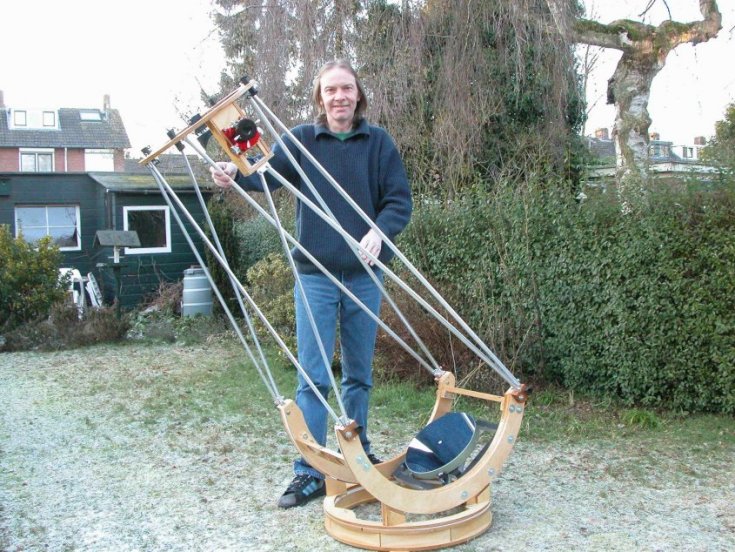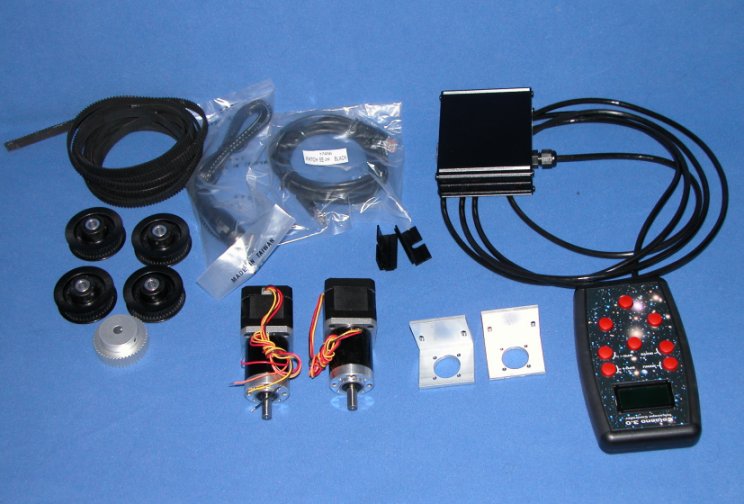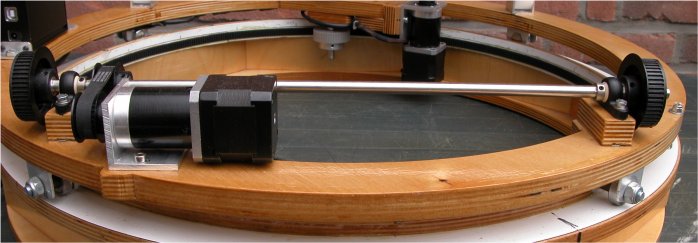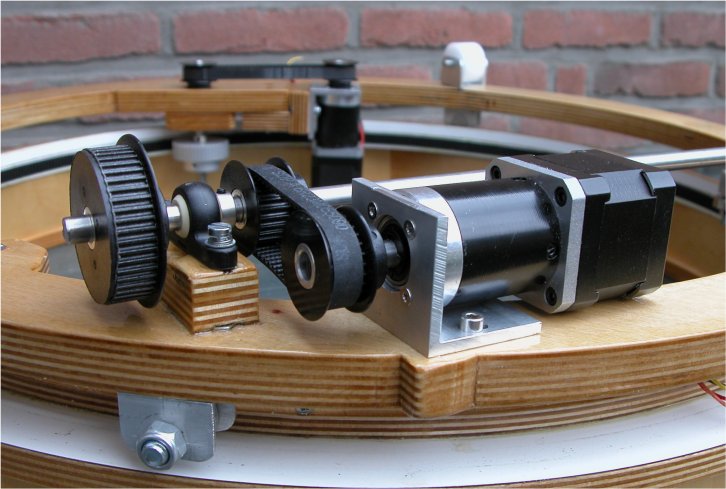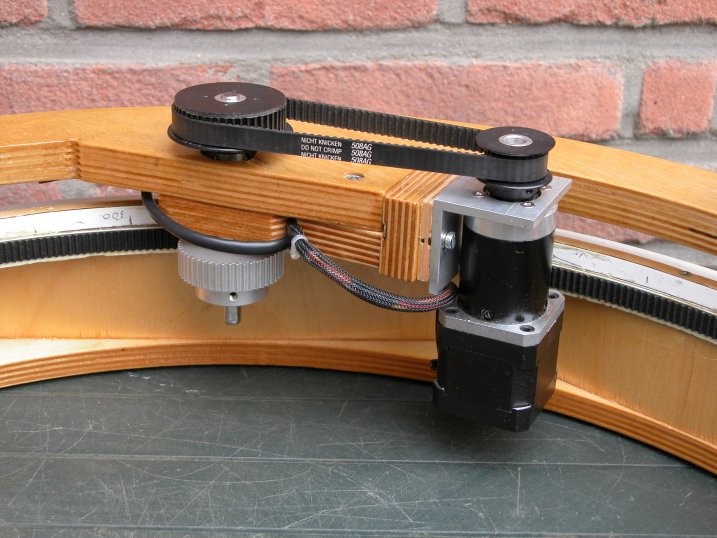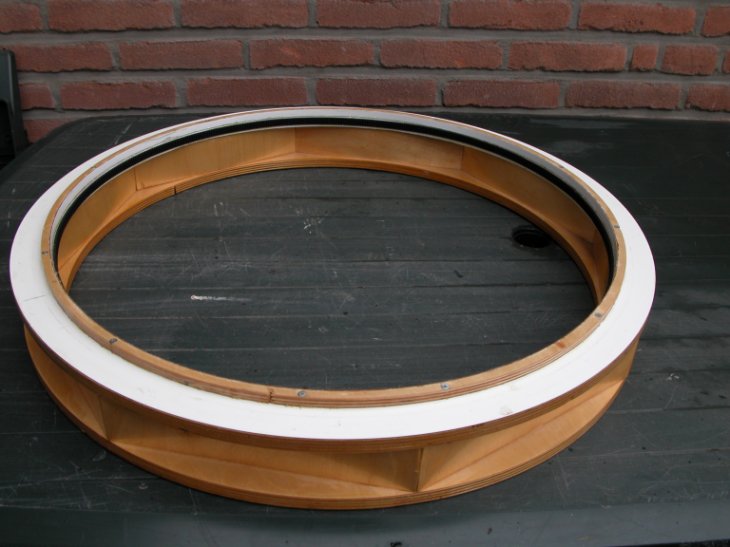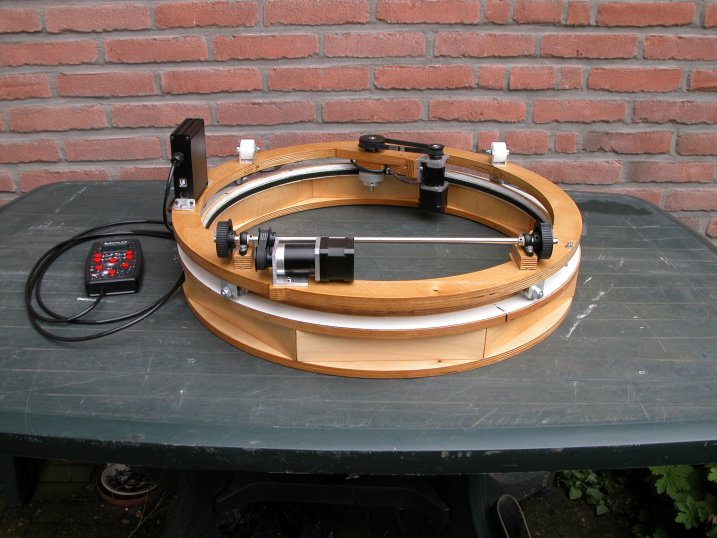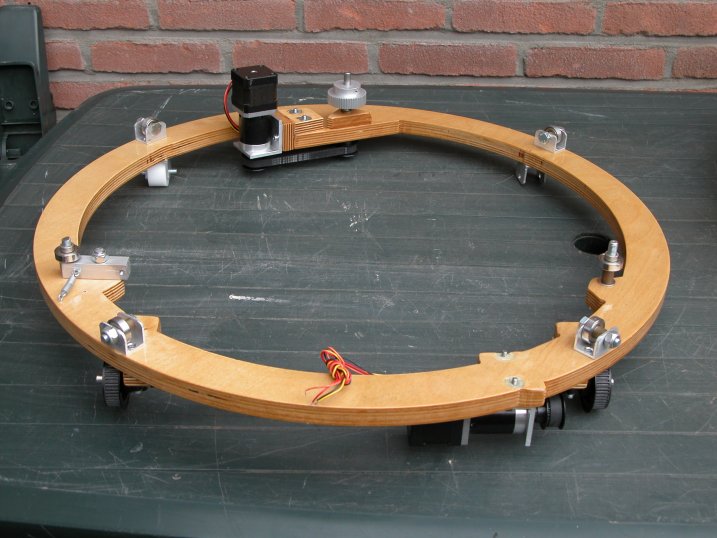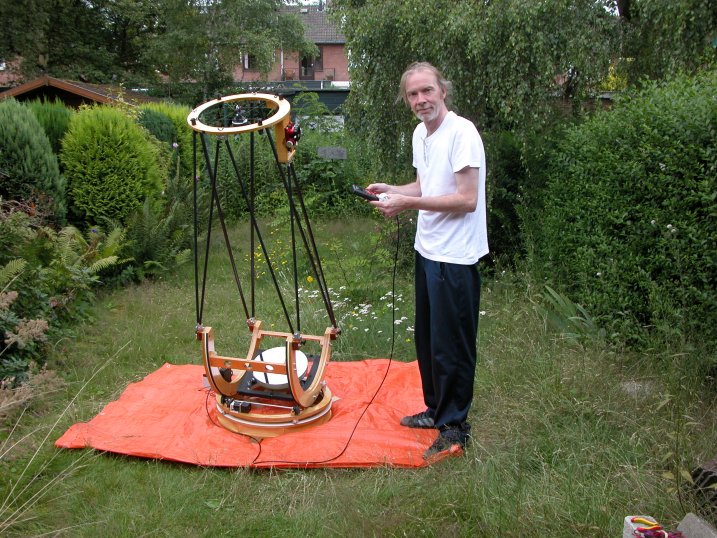Celano Controller
Some years ago I built five 12 inch telescopes (see five 12 inchers). One of those telescopes was for my friend Willem, pictured below with his telescope. After a couple of years of starhopping 'fun', Willem told me he liked observing objects much more then finding them and we decided to motorize his telescope. We decided to do this with the 'Celano Telescope Controller', sold by the Dutch internet shop 'Deepskyparts'. I have seen an older version of this system in action before and was really impressed. And recently Carl Vehmeijer, one of the owners of Deepskyparts, redesigned the computer and handpad, making them much smaller, easy to handle and very good looking. Deepskyparts also sells quality stepper motors, pulley's and timing belts, so all motorizing hardware can, very conveniently, be purchased from the same source.
|
